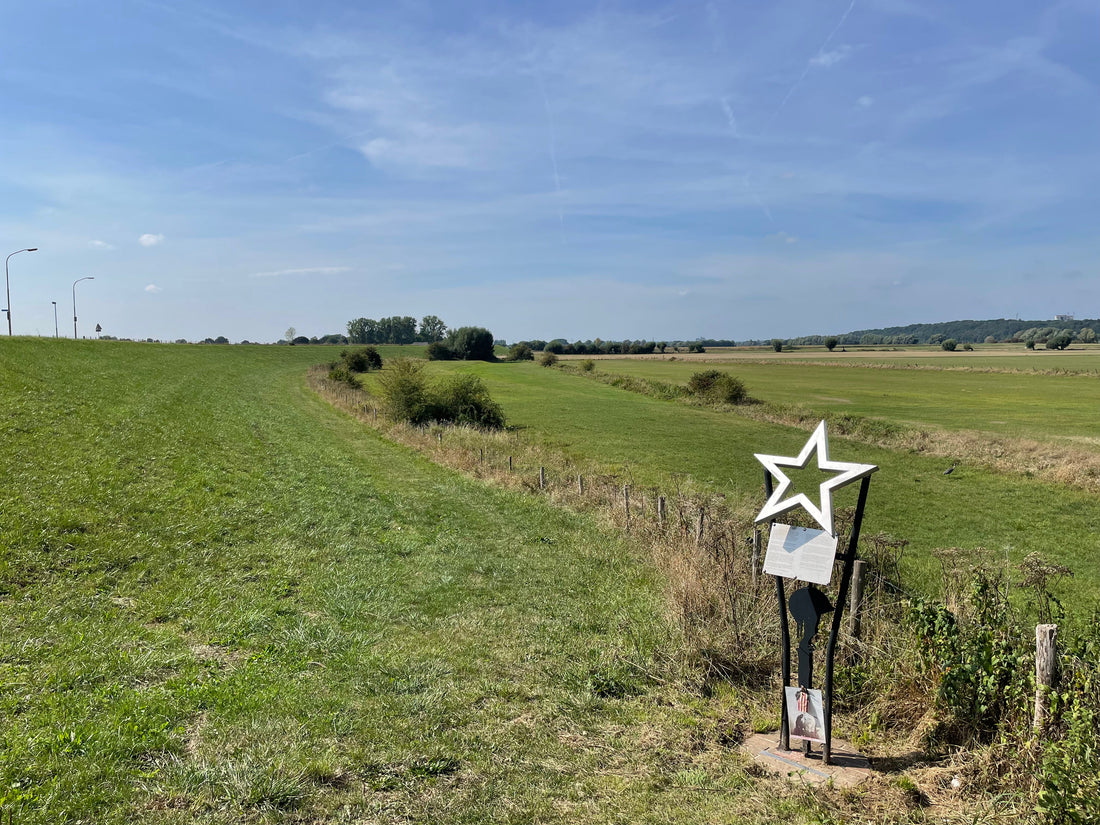
Easy Company at the Crossroads
On This Day: October 5, 1944
The story began in darkness. At 03:30 on October 5, 1944, Sgt. Art Youman led a patrol of four paratroopers toward an outpost near a windmill. They were to occupy a building south of a dike along a road leading to a ferry crossing.
But as they crept forward, they stumbled onto a full company of German SS troops. Grenades exploded. Everyone in the patrol was wounded — PFC James Alley took thirty-two hits from shrapnel — and they fell back, barely reaching the command post alive.
At 04:20, the message reached Captain Richard Winters: German forces had crossed the river by ferry, broken through the line, and were preparing a larger assault. Winters moved instantly. He grabbed a radio, a squad from 1st Platoon, and set off to investigate.

The Finest Performance
Crawling forward under cover of night, Winters observed German troops silhouetted against the sky — a machine-gun position, long winter coats, helmeted outlines. He ordered his men into position.
“Ready, aim, fire,” he whispered.
Twelve rifles cracked. Christenson opened up with the .30-caliber machine gun. Muck and Penkala dropped a mortar shell directly onto the German gun position. The effect was immediate and devastating. Seven German soldiers fell.
As Winters’ men repositioned, rifle grenades came from a culvert beneath the road. Sgt. William Dukeman was killed instantly — the only American fatality that day. Winters pulled his men back and radioed for reinforcements.
By full daylight, Winters had roughly thirty men. He organized them into three assault columns and gave the order that echoed across the line: “Fix bayonets.”
From cover, they charged across 200 yards of open, spongy ground.
Winters was the first to reach the road. He found himself behind a mass of more than 100 German soldiers — their heads down, backs turned, unaware he was there. He fired. Then reloaded. Then fired again. The Germans began to flee, but they were caught in open ground. The Americans had the advantage. It was a duck shoot.
Eleven Germans surrendered. Among them was a nervous officer who relaxed only when Winters sternly reminded Joe Liebgott to treat the prisoners properly.
More SS troops appeared in the distance, retreating toward the ferry. Winters wanted to cut them off but knew his thirty-five men were too few. British artillery rained down on the retreating enemy.
When the Fox Company platoon finally arrived, Winters advanced further toward the river using textbook leapfrog tactics. But they had overextended. German artillery zeroed in. As Winters and his men withdrew back over the dike, shellfire tore into their ranks. Eighteen were wounded.
Still, the engagement was a success beyond measure.
Aftermath
Winters later wrote that Easy Company had faced more than 300 German soldiers that day — and routed them. In his eyes, the reason was clear: poor German leadership and outstanding performance by his own men.
They had used every phase of infantry tactics flawlessly: patrolling, attacking under fire, marksmanship, withdrawal, and communication. It was, he said, “the highlight of all E Company actions for the entire war — even better than D-Day.”
On October 9, Colonel Sink promoted Winters to Executive Officer of the 2nd Battalion.
And so, October 5, 1944 — at a muddy crossroads between Heteren and Randwijk — marked the end of Dick Winters’ time as Easy Company commander, and the moment the company proved itself as one of the finest infantry units in the entire U.S. Army.
Want More Stories Like This?
Sign up for our newsletter and get compelling battlefield stories delivered straight to your inbox.
Planning a visit?
Stand where Winters stood and walk the ground where Easy Company charged. All the details you need are in the Band of Brothers Travel Guide — available now on Amazon.
Sources:
This post is based on excerpts from Band of Brothers by Stephen E. Ambrose, Beyond Band of Brothers by Dick Winters, and Easy Company Soldier by Don Malarkey.
Photos courtesy of U.S. Army Signal Corps, James Skeffington, and Unsplash
